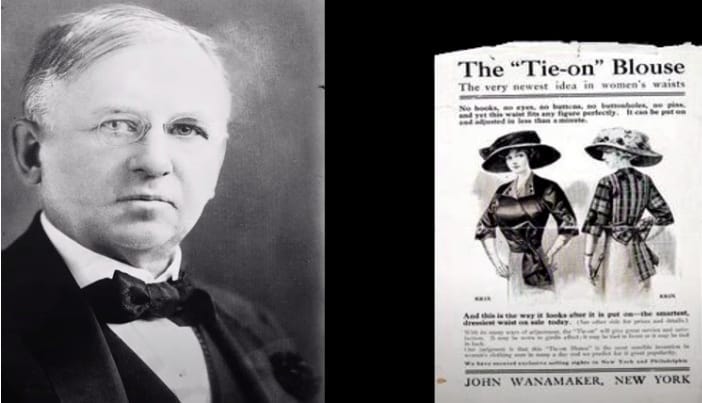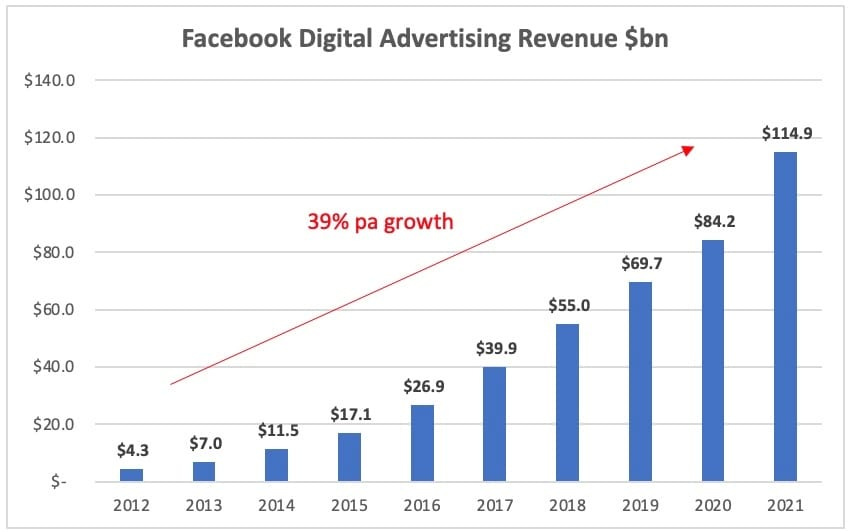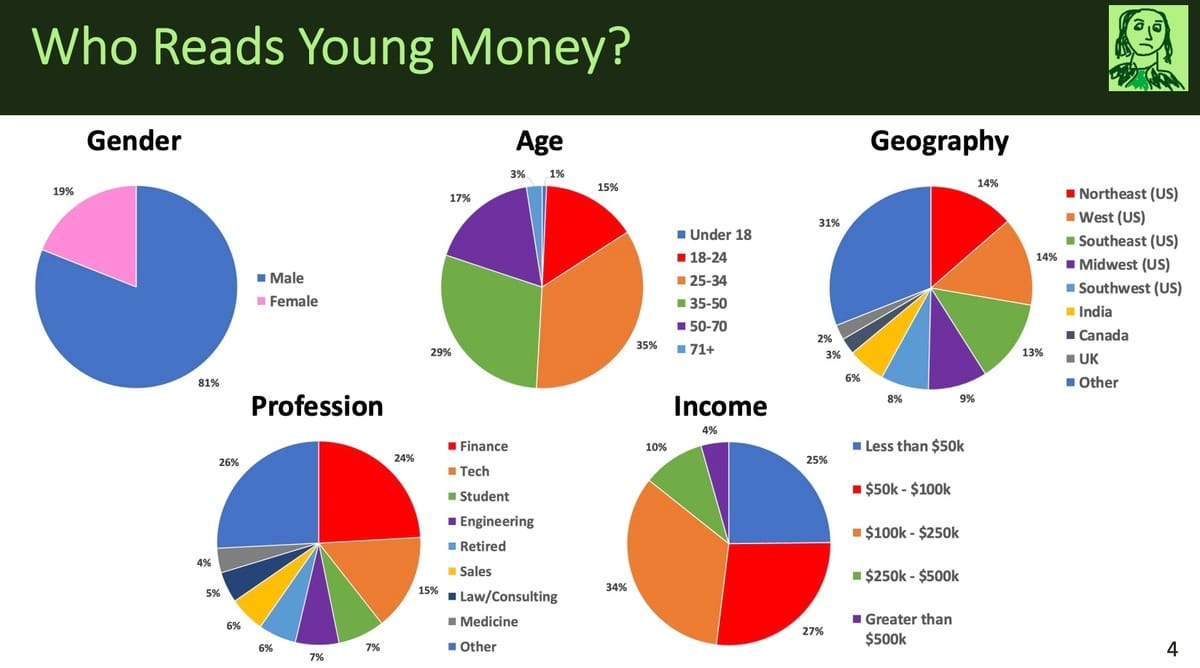How Apple’s Privacy Changes Create a $10bn Opportunity for Beehiiv and Its Content Creators
There has never been a better time to be a content creator
Hi everyone 👋
Do you ever get the feeling that your phone and Facebook are monitoring you? Until recently, that was actually the case. For the past 10 years, Facebook’s ability to track us made it an unstoppable force in digital advertising at the expense of consumers and content creators.
But Apple's new privacy changes have shaken things up. Learn about this and the $10 billion opportunity it has created for Beehiiv and its content creators.
Key Points
For investors* and content creators with only a few minutes to spare, here’s why now is the time for Beehiiv and its content creators:
Beehiiv’s recent Ad Network launch comes just as Apple’s privacy changes have unlocked a $10bn opportunity in digital advertising.
What’s changed? Apple’s new privacy standards have empowered consumers. Advertisers can no longer track us across the internet without our permission.
Successful advertising now requires transparency and providing consumers valuable content in exchange for our attention. This requires a genuine partnership with content creators.
Beehiiv’s Ad Network connects its content creators with premium advertisers while allowing them to own their audience relationships. With a business model that succeeds along with its customers, it will become a destination for star content creators and their valuable audiences.
Topics covered: Digital Advertising and Facebook’s dominance, App Tracking Transparency (ATT), email newsletters and platform models.
*All opinions are personal. This is not investment advice.
John Wanamaker and the Problem With Advertising
Advertising pioneer John Wanamaker
John Wanamaker was widely considered an advertising genius. Born the son of a brickmaker, he eventually created one of the first department stores in 1877. Powered by advertising, John grew this into one of the largest retail chains in the country. Eventually, it formed part of the Macys department store chain.
John was most famous for this quote:
“Half the money I spend on advertising is wasted. The trouble is, I don’t know which half.”
John was describing the perennial issue with advertising. There were 2 parts to this problem:
Determining if his advertisements were being seen by the intended audience and
Measuring the impact his advertisements had on his audience's behaviour, such as whether it led to a purchase or other desired action.
How did John overcome this?
At that time, retail stores offered an aggressive, Wild West shopping experience. They haggled with customers on every piece of clothing to get the highest price and the phrase ‘Buyer Beware’ was a shopper’s best friend.
In contrast, John treated his customers with respect. He introduced fixed price tags and money-back guarantees.
John was the first retailer to advertise regularly in newspapers. His honest advertisements and transparent business principles drew in the crowds.
This was advertising done right. Consumers were happy to give their attention in return for something they value.
Facebook would change all of this.
Mobile Advertising and the Rise of Facebook
"Facebook Ads represent a completely new way of advertising online. For the last hundred years media has been pushed out to people, but now marketers are going to be a part of the conversation. And they're going to do this by using the social graph.”
Mark Zuckerberg
Facebook founder Mark Zuckerberg made this comment during the launch of the Facebook Ad Platform in 2007. He was right – advertising (and our privacy) would never be the same.
The launch highlighted 3 important benefits for advertisers:
Audience Reach: Advertisers would get access to Facebook’s enormous user base.
Targeting: Facebook’s social graph charts its users’ relationships and interests. Every ‘like’, comment or photo helps Facebook build a detailed profile on its users. Advertisers can use this information to target specific users.
Measurement: Advertisers will understand what their audience does, buys on Facebook, as well as on other websites.
The result was a platform with an audience reach that rivalled the largest media organisations combined with precise targeting and measurement. It was the solution to John Wanamaker’s problem and then some.
Apple’s iPhone and the use of mobile apps took Facebook’s ability to target and measure advertisements to frightening levels.
Since 2012, every iPhone user has a unique identification number called an Identification for Advertisers (IDFA). If you are an iPhone user, your unique IDFA allows advertisers to track you across all your apps. This is best illustrated with the online sales funnel for a pair of shoes:
Discovery: You are scrolling through your Facebook feed and see an advertisement for a pair of shoes. You don’t tap on the advertisement, but those shoes look good!
Consideration: Days later, you use the Google Chrome browser to do research on the brand advertiser’s website. Through Facebook’s Ad Network, the advertiser notices your IDFA and realises you’re the same person that saw their Facebook advertisement. Yes, you’re being watched!
Conversion: You can’t resist those shoes any longer! You purchased the shoes on the retailer’s website. Your IDFA is shared with Facebook which can precisely attribute your purchase to the advertisement you originally saw on Facebook’s app.
Facebook’s combination of Audience Reach, Targeting and Measurement was simply irresistible.
Facebook Digital Advertising Revenue. Source: Statista
Facebook’s rise was meteoric. But like many aggregators, Facebook wasn’t sharing the wealth with other participants like content creators or consumers.
Facebook owns the audience relationships and therefore the advertising income
Content creators had little incentive to create authentic, valuable content. As consumers, we felt like we were in a constant state of surveillance. Advertisements followed us everywhere on the internet.
It seemed like technology and surveillance had replaced John Wanamaker’s principles of transparency and value. This wasn’t sustainable. Something had to give, and it did.
App Tracking Transparency - Apple’s Privacy Control Changes the Game
"The profits are all based on the user’s info, but the users get none of the profits back. Apple makes its money off of good products, not off of you. As they say, with Facebook, you are the product."
Steve Wozniak, Apple Co-founder
Silicon Valley legend and Apple co-founder Steve Wozniak made this quote in the wake of the Cambridge Analytica privacy scandal.
The scandal itself did little to improve the privacy Facebook offered its users. A Pew study in late 2018 found 74% of Facebook users did not know it maintained a list of their interests and traits to target them with ads.
By early 2021, Apple decided it had enough. It introduced a game-changing privacy feature called App Tracking Transparency (ATT). The feature made it easy for users to opt-out of being tracked by apps simply by tapping a button labelled “Ask App Not to Track”.
We believe users should have the choice over the data that is being collected about them and how it’s used. Facebook can continue to track users across apps and websites as before, App Tracking Transparency in iOS 14 will just require that they ask for your permission first. https://t.co/UnnAONZ61I
Opting out prevents apps and advertising platforms like Facebook from tracking the user’s IDFA. Unsurprisingly, around 75% of users opted out of being tracked. This greatly diminishes Facebook’s tracking and measurement capabilities.
“Apple created two challenges for advertisers. One is that the accuracy of our ads targeting decreased, which increased the cost of driving outcomes. The other is that measuring those outcomes became more difficult.”
Mark Zuckerberg, Facebook 4Q21 earnings call
Advertisers saw a significant reduction in their return on investment from their Facebook advertisements and therefore, reduced their spending with Facebook. Facebook estimated this impact to be $10bn.
Advertisers are desperate for a solution. For example, loose tea-leaf seller Plum Deluxe saw a 10x increase in its customer acquisition costs.
Apple has essentially raised the bar for audience engagement. Users must choose to give advertisers their information.
It’s back to the reality that John Wanamaker discovered nearly 150 years ago. Successful advertising requires consumers to get something valuable in exchange for their attention. For platforms with high quality content and engaged audiences, this is an opportunity.
Email Newsletters and the Value of High Quality Content
“Email is the only place where people (not algorithms) are in charge.”
Ann Handley, MarketingProfs founder and best-selling author.
Ann highlights an important point. With emails, people get to choose what they read. It’s about giving them valuable content, rather than relying on opaque algorithms.
Email newsletters have 4 main metrics to measure audience engagement:
Open rates: The proportion of subscribers who choose to open the email.
Click rates: Clicking on links in the article is an indication that the reader is engaging with the content and finding value.
Unsubscribe rates: A low unsubscribe rate over time implies subscribers are finding value in the content.
Webpage Views: Email newsletter platforms like Beehiiv simultaneously publish the newsletter content onto the writer’s website. A website gives writers a space to publicly display their content and capture engagement from a wider audience.
Apple’s privacy changes may make measures like open rates less dependable. However, valuable content makes readers take deliberate actions that are strong indicators of engagement. For example, high click rates give potential advertisers confidence that readers will click on their advertisement.
Additionally, newsletter writers have highly targeted audiences. As discussed previously, successful writers see their audience as their greatest asset and take steps to understand them. Below is the level of detail Young Money author Jack Raines has on his audience:
“The average Young Money reader is a late 20s male, living in the US, making $100k+ working in finance.”
Young Money newsletter by Jack Raines
Email newsletters can therefore be a valuable advertising alternative to Facebook’s watered-down Ad Platform. Underpinning their success is the quality content produced by star writers. These writers have the valuable audience relationships that advertisers are desperate to reach.
Morning Brew showed how valuable a newsletter audience can be. In late 2020, Business Insider acquired Morning Brew for an estimated $75m. At the time, Morning Brew had amassed 20m subscribers and was making $15-20m in advertising revenue.
Technology can help more writers achieve this level of success. This time, they won’t have to give away their content for free.
How Beehiiv’s Ad Network Is Built for Its Content Creators
“If you want to be cool, go join someone else. If you want to make others cool, join Microsoft.”
Satya Nadella, Microsoft CEO
Satya made this comment in front of a crowd of eager Stanford Business School students. It is a vivid description of the alignment platform businesses have with users.
Platform businesses like Beehiiv succeed along with their users. They provide the infrastructure that allows their users to build direct relationships with their audiences and succeed.
This contrasts with aggregators like Facebook. Its Ad Network was a great solution for advertisers as it combined strong audience targeting and convenience.
With a single point of access, advertisers could reach the audience of the individual creators and get all the reporting and services they need to run an advertising campaign.
Content creators paid the price for Facebook’s ‘convenience’ because Facebook owned the relationship with their audience.
Beehiiv’s new Ad Network offers the best of both worlds, enabling content creators to maintain control over their audience while providing the necessary tools and services for advertising success.
Beehiiv's Ad Network
With a business model that succeeds along with its writers, Beehiiv will become a destination for star content creators. Their valuable audiences will make Beehiiv’s Ad Network irresistible to advertisers.
Conclusion
Apple’s privacy changes have created a $10bn opportunity.
For the last 10 years, Facebook has used technology and surveillance in place of providing consumers with valuable content. It was incredibly successful and kept all the gains for itself.
Apple’s privacy changes have swung the pendulum back to consumers. Once again, it’s about John Wanamaker’s principles of transparency and giving consumers something valuable in exchange for their attention.
This means there has never been a better time to be a content creator. It’s quality content that creates the authentic audience relationships that advertisers desperately want.
By aligning itself with its customers, Beehiiv’s platform model will create a hub for star content creators. Their valuable audiences will make its Ad Network a magnet for Advertisers.
That’s 10bn reasons for investors and content creators to pay close attention to Beehiiv.








